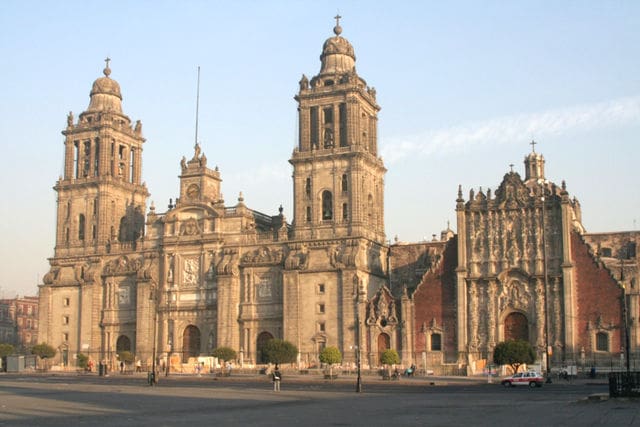35 Things Mexico City Is Very Famous For
Mexico City is a city with everything that every traveler would desire from its rich history to its culture and vibrant nightlife. Mexico City is home to many world-class museums and art galleries, as well as some stunning architecture. Mexico City is a foodie’s paradise, with a wide variety of delicious food to try. From traditional Mexican cuisine to the city’s famous street food, there’s something for everyone.
Mexico City also has a wide variety of experiences that are captivating for many travelers. Mexico City has a vibrant nightlife scene, with something for everyone. From rooftop bars to clubs, there are plenty of places to have fun. The city also has many markets and shops to explore for souvenirs, clothes, and other stuff. In this article, we delve deeper into the list of 35 of the things that make Mexico City so special for travelers.
1. Mexico City had been the capital of the Aztec Empire
Mexico City became the capital of New Spain. The viceroy of Mexico or vice-king lived in the viceregal palace on the main square or Zócalo. A late seventeenth-century painting of the Zócalo by Cristóbal de Villalpando depicts the main square, which had been the old Aztec ceremonial centre.
The existing central plaza of the Aztecs was effectively and permanently transformed to the ceremonial center and seat of power during the colonial period, and remains to this day in modern Mexico, the central plaza of the nation.
2. Tacos has become a standard of Mexico City’s cuisine

Ari Helminen, CC BY 2.0, via Wikimedia Commons
Mexico City is known for its vibrant street food scene offering a variety of delicious snacks and meals. These include tacos de barbacoa, enchiladas, tacos de minero and gorditas, along with oyster shops and fried fish stands.
3. Mexico City is known to be vulnerable to flooding
Mexico City is located in the Valley of Mexico, sometimes called the Basin of Mexico. This valley has no natural drainage outlet for the waters that flow from the mountainsides, making the city vulnerable to flooding. Drainage was engineered through the use of canals and tunnels starting in the 17th century.
4. Mexico City primarily rests on what was Lake Texcoco
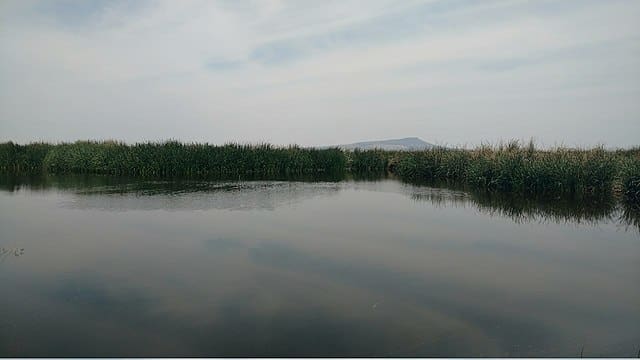
PetrohsW, CC BY-SA 4.0, via Wikimedia Commons
Lake Texcoco was drained starting from the 17th century. Although none of the lake waters remain, the city rests on the lake bed’s heavily saturated clay. This soft base is collapsing due to the over-extraction of groundwater, called groundwater-related subsidence.
Since the beginning of the 20th century, the city has sunk as much as nine meters in some areas. On average Mexico City sinks 20 inches or 50 centimetres every year. This sinking is causing problems with runoff and wastewater management, leading to flooding problems, especially during the summer.
5. Mexico City is a model for drastically lowering pollution levels
By the 1990s Mexico City had become infamous as one of the world’s most polluted cities; however, the city has since become a model for drastically lowering pollution levels. By 2014 carbon monoxide pollution had dropped drastically.
To clean up pollution, the federal and local governments implemented numerous plans including the constant monitoring and reporting of environmental conditions, such as ozone and nitrogen oxides.
6. Mexico City is home to Chapultepec Park
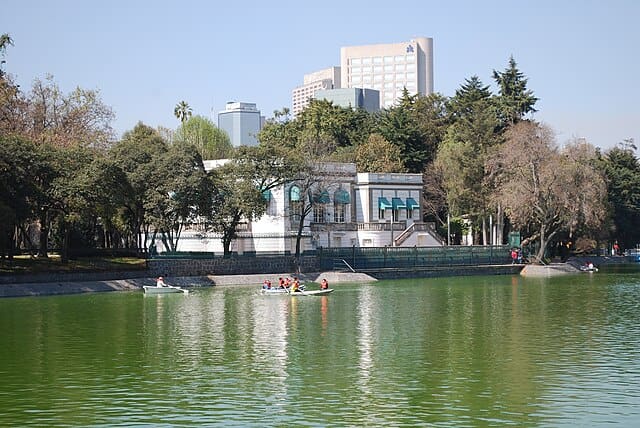
Thelmadatter, CC BY-SA 3.0, via Wikimedia Commons
Chapultepec, the city’s most iconic public park, is one of the largest city parks in Mexico. The park houses a castle, museums, and a zoo.
It measures in total of just over 686 hectares. Centered on a rock formation called Chapultepec Hill, one of the park’s main functions is as an ecological space in Greater Mexico City.
7. Mexico City hosts the oldest public park in America
Alameda Central is a public urban park in downtown Mexico City. Created in 1592, the Alameda Central is the oldest public park in America. It has become a symbol of a traditional Mexican park and many other parks in the country take on the name Alameda as well.
The Alameda Central Park is a green garden with paved paths and decorative fountains and statues and is frequently the center of civic events.
8. Mexico City has three zoos
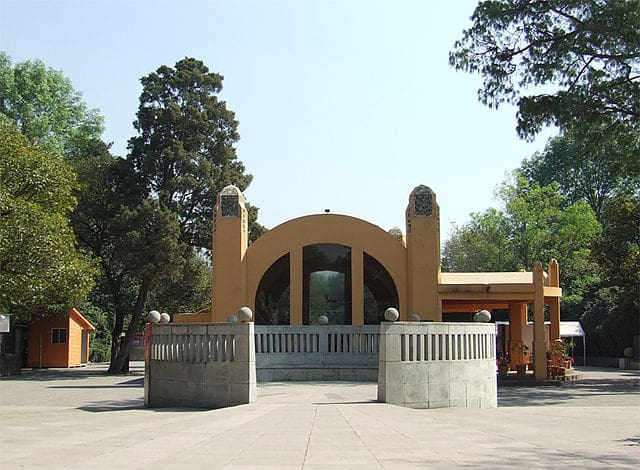
Dgzvs2012, CC BY-SA 3.0, via Wikimedia Commons
Chapultepec Zoo is located in the first section of Chapultepec Park in the Miguel Hidalgo. Visitors can see about 243 specimens of different species. Zoo San Juan de Aragon is near the San Juan de Aragon Park in the Gustavo A. Madero. In this zoo, there are species that are in danger of extinction such as the jaguar and the Mexican wolf.
Zoo Los Coyotes is a zoo located south of Mexico City in the Coyoacan. It has more than 301 specimens of 51 species of wild native or endemic fauna from the area, featuring eagles, acolytes, coyotes, macaws, bobcats, Mexican wolves, raccoons, mountain lions, teporingos, foxes and white-tailed deer.
9. Mexico City has a subtropical highland climate
Due to its tropical location but high elevation, the lower region of the valley receives less rainfall than the upper regions of the south; the lower boroughs of Iztapalapa, Iztacalco, Venustiano Carranza and the east portion of Gustavo A.
Madero is usually drier and warmer than the upper southern boroughs of Tlalpan and Milpa Alta, a mountainous region of pine and oak trees known as the range of Ajusco.
10. Mexico City experiences heavy precipitation in the summer months
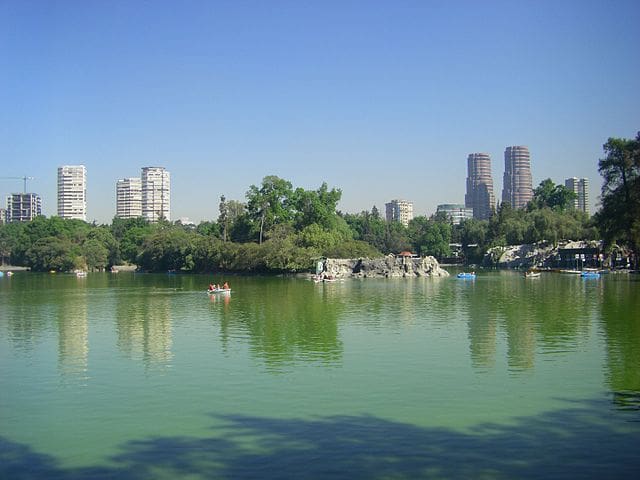
Chivista, Public domain, via Wikimedia Commons
Overall precipitation is heavily concentrated in the summer months and includes dense hail.
Snow falls in the city very rarely, although somewhat more often in nearby mountain tops. Throughout its history, the Central Valley of Mexico was accustomed to having several snowfalls per decade.
11. The majority of the residents in Mexico City are Catholic
This makes it the largest Christian denomination, though it has been decreasing over the last decades.
Many other religions and philosophies are also practiced in the city: many different types of Protestant groups, different types of Jewish communities, Buddhist, Islamic and other spiritual and philosophical groups.
12. The Roman Catholic Archdiocese of Mexico is the largest archdiocese in the world
The Archdiocese of Mexico is a Latin Church ecclesiastical territory or archdiocese of the Catholic Church that is situated in Mexico City, Mexico. It was erected as a diocese on 2 September 1530 and elevated to an archdiocese on 12 February 1546. The archdiocese is one of the largest in the world, with over four million Catholics. The cathedra of the archdiocese is found within the Metropolitan Cathedral in Mexico City.
13. Mexico City is home to large communities of expatriates
According to the 2020 Census, 2.03% of Mexico City’s population identified as Black, Afro-Mexican, or of African descent.
Mexico City is home to large communities of expatriates and immigrants from the rest of North America, South America, Central America and the Caribbean. Additionally from Europe and from the Arab world.
14. Mexico City is home to the largest population of Americans living outside the United States

Isaacvp, CC BY-SA 4.0, via Wikimedia Commons
Estimates are as high as 700,000 Americans living in Mexico City, while in 1999 the U.S. Bureau of Consular Affairs estimated over 440,000 Americans lived in the Mexico City Metropolitan Area.
15. Mexico City is home to some of the best private hospitals in Mexico
The national public healthcare institution for private-sector employees, IMSS, has its largest facilities in Mexico City including the National Medical Center and the La Raza Medical Center and has an annual budget of over 6 billion pesos.
The IMSS and other public health institutions, including the Public Sector Employees’ Social Security Institute and the National Health Ministry maintain large specialty facilities in the city. These include the National Institutes of Cardiology, Nutrition, Psychiatry, Oncology, Pediatrics, and Rehabilitation.
16. Mexico City is the eighth richest city in the world
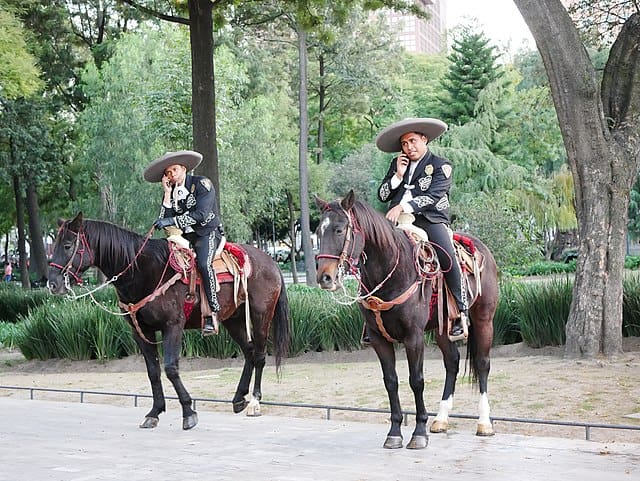
Thayne Tuason, CC BY 4.0, via Wikimedia Commons
The high spending power of Mexico City inhabitants makes the city attractive for companies offering prestige and luxury goods. Read more Top 20 Amazing Facts about Mexico City.
According to a 2009 study conducted by PwC, Mexico City had a GDP of $390 billion, ranking it as the eighth richest city in the world and the richest in Latin America. In 2009, Mexico City alone would rank as the 30th largest economy in the world.
17. Mexico City has one of the world’s highest police officer-to-resident ratios
Under policies enacted by Mayor Marcelo Ebrard between 2009 and 2011, Mexico City underwent a major security upgrade with violent and petty crime rates both falling significantly despite the rise in violent crime in other parts of the country.
Some of the policies enacted included the installation of 11,000 security cameras around the city and a very large expansion of the police force. Mexico City has one of the world’s highest police officer-to-resident ratios, with one uniformed officer per 100 citizens.
18. The Central de Abasto is the most important commercial establishment in Mexico City

Milton Martínez/ Secretaría de Cultura de la Ciudad de México, CC BY-SA 2.0, CC BY 2.0, via Wikimedia Commons
The Central de Abasto is Mexico City’s main wholesale market for produce and other foodstuffs run similarly to traditional public markets. It was constructed to be the meeting point for producers, wholesalers, retailers and consumers for the entire country.
Located in the eastern borough of Iztapalapa, it is the most important commercial establishment in Mexico and the largest of its kind in the world. The market handles over 30,000 tons of merchandise daily, representing 80% of the consumption of the Mexico City metropolitan area.
19. The Historic Center of Mexico City is widely known for low-cost retailers
The Historic Center of Mexico City is the central neighbourhood in Mexico City, Mexico, focused on Zócalo or the main plaza and extending in all directions for a number of blocks. It can hold up to nearly 100,000 people.
The Historic Center of Mexico City is widely known for specialized, often low-cost retailers. Certain blocks or streets are dedicated to shops selling a certain type of merchandise, with areas dedicated to over 40 categories ranging from home appliances, office furniture and safes, books, photography, jewelry, and opticians.
20. Mexico City is a destination for many foreign tourists

Isaacvp, CC BY-SA 4.0, via Wikimedia Commons
The Historic centre of Mexico City and the floating gardens of Xochimilco in the southern borough have been declared World Heritage Sites by UNESCO. Read more fascinating facts about Historic center of Mexico City.
Landmarks in the Historic Center include the Plaza de la Constitución, the main central square with its epoch-contrasting Spanish-era Metropolitan Cathedral and National Palace, ancient Aztec temple ruins Templo Mayor and modern structures, all within a few steps of one another.
21. The most recognizable icon of Mexico City is the Golden Angel of Independence
The Angel of Independence is a victory column on a roundabout on the major thoroughfare of Paseo de la Reforma in downtown Mexico City. It was built in 1910 during the presidency of Porfirio Díaz by architect Antonio Rivas Mercado, to commemorate the centennial of the beginning of Mexico’s War of Independence.
In later years it was made into a mausoleum for the most important heroes of that war. It is one of the most recognizable landmarks in Mexico City, and it has become a focal point for both celebration and protest.
22. Paseo de la Reforma is the oldest major roadway in Mexico City
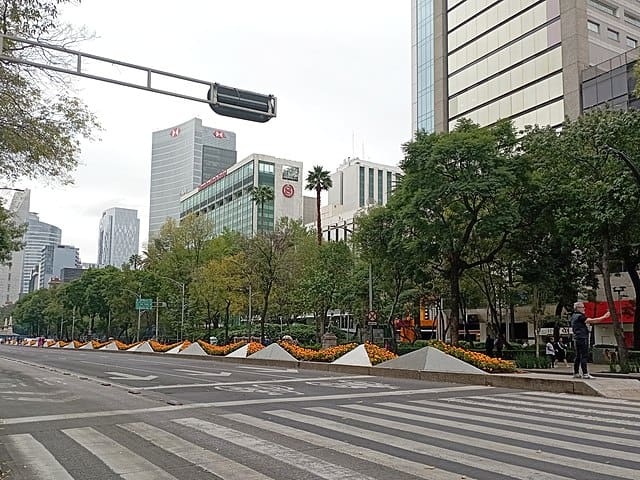
Juan Carlos Fonseca Mata, CC BY-SA 4.0, via Wikimedia Commons
Paseo de la Reforma is a wide avenue that runs diagonally across the heart of Mexico City. It was designed at the behest of Emperor Maximilian by Ferdinand von Rosenzweig during the era of the Second Mexican Empire and modelled after the great boulevards of Europe, such as the Ringstraße in Vienna and the Champs-Élysées in Paris.
The planned grand avenue was to link the National Palace with the imperial residence, Chapultepec Castle, which was then on the southwestern edge of town. The project was originally named Paseo de la Emperatriz, Promenade of the Empress in honour of Maximilian’s consort Empress Carlota. After the fall of the Empire and Maximilian’s subsequent execution, the Restored Republic was renamed the Paseo in honour of the La Reforma.
23. Chapultepec Park houses the Chapultepec Castle in Mexico City
Chapultepec Castle is located on top of Chapultepec Hill in Mexico City’s Chapultepec Park. The name Chapultepec is the Nahuatl word chapoltepēc which means on the hill of the grasshopper. It is located at the entrance to Chapultepec Park, at a height of 2,325 metres above sea level.
The site of the hill was a sacred place for Aztecs, and the buildings atop it have served several purposes during its history, including serving as a military academy, imperial residence, presidential residence, observatory, and since February 1939, the National Museum of History. Chapultepec Castle, along with Iturbide Palace, also in Mexico City, are the only royal palaces in North America which were inhabited by monarchs.
24. The Palacio de Bellas Artes is a prominent cultural centre in Mexico City

Jeses, CC BY-SA 2.5, via Wikimedia Commons
It hosts performing arts events, literature events and plastic arts galleries and exhibitions, including important permanent Mexican murals. Bellas Artes for short, has been called the art cathedral of Mexico. The building is located on the western side of the historic center of Mexico City next to the Alameda Central Park.
Bellas Artes replaced the original National Theater, built in the late 19th century. The latter was demolished as part of an urban redesign in Mexico City, and a more opulent building was planned to celebrate the centennial of the Mexican War of Independence in 1910. The exterior of the building is primarily Art Nouveau and Neoclassical and the interior is primarily Art Deco. The building is best known for its murals by Diego Rivera, Siqueiros and others, as well as the many exhibitions and theatrical performances it hosts, including the Ballet Folklórico de México.
25. The Plaza de las Tres Culturas in Mexico City is the oldest European school of higher learning in America
The Plaza de las Tres Culturas also known as The Three Cultures Square, is the main square within the Tlatelolco neighborhood of Mexico City. The name Three Cultures is in recognition of the three periods of Mexican history reflected by buildings in the square: pre-Columbian, Spanish colonial, and the independent nation. The square, designed by Mexican architect and urbanist Mario Pani, was completed in 1966.
Monument to the Tlatelolco massacre in the Plaza de las Tres Culturas. The square contains the archaeological site of the city-state of Tlatelolco and is flanked by the oldest European school of higher learning in the Americas called the College of Santa Cruz de Tlatelolco built in 1536 by friar Juan de Torquemada and by a massive housing complex built in 1964.
26. Mexico City is among the top ten cities in the world with the highest number of museums

Juan Carlos Fonseca Mata, CC BY-SA 4.0, via Wikimedia Commons
In addition, according to the Secretariat of Tourism, the city has about 170 museums and is among the top ten cities in the world with the highest number of museums, over 100 art galleries, and some 30 concert halls, all of which maintain a constant cultural activity during the whole year. Many areas e.g. Palacio Nacional and the National Institute of Cardiology have murals painted by Diego Rivera. He and his wife Frida Kahlo lived in Coyoacán, where several of their homes, studios, and art collections are open to the public.
The house where Leon Trotsky was initially granted asylum and finally murdered in 1940 is also in Coyoacán. In addition, there are several haciendas that are now restaurants, such as the San Ángel Inn, the Hacienda de Tlalpan, the Hacienda de Cortés and the Hacienda de los Morales. Read the top 10 remarkable facts about National Museum of Anthropology.
27. Mexico City International Airport is Mexico City’s primary airport
This is the main international airport serving Greater Mexico City, along with Toluca International Airport and, since 2022, Felipe Ángeles International Airport is Mexico’s and Latin America’s busiest airport by passenger traffic and aircraft movements, and the 16th-busiest in the world.
The airport sustains 35,000 jobs directly and around 15,000 indirectly in the immediate area.The airport is owned by Grupo Aeroportuario de la Ciudad de México and operated by Aeropuertos y Servicios Auxiliares, the government-owned corporation, which also operates 22 other airports throughout Mexico.
28. Mexico City is served by the Mexico City Metro which is the largest in Latin America
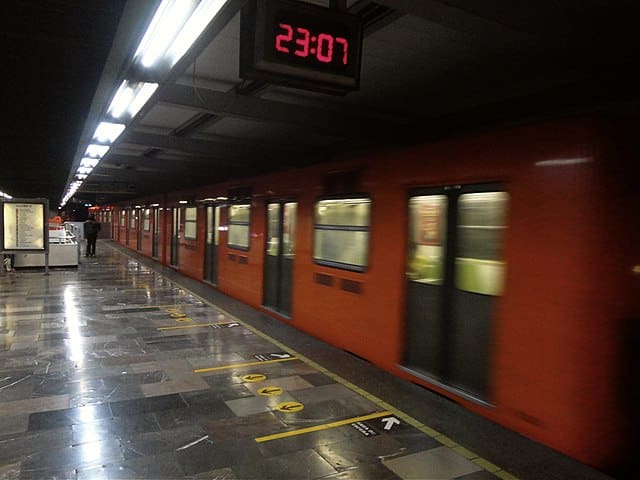
Juan Carlos Fonseca Mata, CC BY-SA 4.0, via Wikimedia Commons
The Mexico City Metro is a rapid transit system that serves the metropolitan area of Mexico City, including some municipalities in the State of Mexico. Operated by the Sistema de Transporte Colectivo, it is the second largest metro system in North America after the New York City Subway. In 2019, the system served 1.655 billion passengers, the tenth-highest ridership in the world.
The Metro has figured in Mexico’s cultural history, as the inspiration for a musical composition for strings, Metro Chabacano and Rodrigo González’s 1982 song, Metro Balderas. It was also a filming location for the 1990 Hollywood movie Total Recall. Public intellectual Carlos Monsiváis has commented on the cultural importance of the Metro, a space for collective expression, where diverse social sectors are compelled to mingle every day. Read more fascinating facts about Mexico City Metropolitan Cathedral.
29. Mexico City has a rich history of artistic expression
Various types of visual arts developed in the geographical area now known as Mexico. The development of these arts roughly follows the history of Mexico, divided into the prehispanic Mesoamerican era, the colonial period, the period after the Mexican War of Independence, the development of Mexican national identity through art in the nineteenth century, and the fluorescence of modern Mexican art after the Mexican Revolution.
The strength of this artistic movement was such that it affected newly invented technologies, such as still photography and cinema, and strongly promoted popular arts and crafts as part of Mexico’s identity. Since the 1950s, Mexican art has broken away from the muralist style and has been more globalized, integrating elements from Asia, with Mexican artists and filmmakers having an effect on the global stage.
30. The Academia de San Carlos was the first major art academy in Mexico City

Eneas De Troya from Mexico City, México, CC BY 2.0, via Wikimedia Commons
During the 19th century, an important producer of art was the Academia de San Carlos, founded during colonial times. The Academia de San Carlos is located at 22 Academia Street just northeast of the main plaza of Mexico City.
It was the first major art academy and the first art museum in the Americas. It was founded in 1781 as the School of Engraving and moved to the Academia Street location about 10 years later. It emphasized classical European training until the early 20th century when it shifted to a more modern perspective. At this time, it also integrated with the National Autonomous University of Mexico, eventually becoming the Faculty of Arts and Design, which is based in Xochimilco. Currently, only graduate courses of the modern school are given in the original academy building.
31. Mexico City is home to a number of orchestras offering seasonal programs
These include the Mexico City Philharmonic, which performs at the Sala Ollin Yoliztli; the National Symphony Orchestra, whose home base is the Palacio de Bellas Artes Palace of the Fine Arts, a masterpiece of art nouveau and art decó styles; the Philharmonic Orchestra of the National Autonomous University of Mexico, and the Minería Symphony Orchestra, both of which perform at the Sala Nezahualcóyotl, which was the first wrap-around concert hall in the western hemisphere when inaugurated in 1976.
There are also many smaller ensembles that enrich the city’s musical scene, including the Carlos Chávez Youth Symphony, the Cuarteto Latinoamericano, the New World Orchestra, Orquesta del Nuevo Mundo, the National Polytechnical Symphony and the Bellas Artes Chamber Orchestra, Orquesta de Cámara de Bellas Artes.
32. Mexico City is also a leading center of popular culture and music

Isaacvp, CC BY-SA 4.0, via Wikimedia Commons
There are a multitude of venues hosting Spanish and foreign-language performers. These include the 10,000-seat National Auditorium that regularly schedules Spanish and English-language pop and rock artists, as well as many of the world’s leading performing arts ensembles, the auditorium also broadcasts grand opera performances from New York’s Metropolitan Opera on giant, high-definition screens. In 2007 National Auditorium was selected world’s best venue by multiple genre media.
Other sites for pop artist performances include the 3,000-seat Teatro Metropolitan, the 15,000-seat Palacio de los Deportes, and the larger 50,000-seat Foro Sol Stadium, where popular international artists perform on a regular basis.
The Cirque du Soleil has held several seasons at the Carpa Santa Fe, in the Santa Fe district in the western part of the city. There are numerous venues for smaller musical ensembles and solo performers. These include the Hard Rock Live, Bataclán, Foro Scotiabank, Lunario, Circo Volador and Voilá Acoustique. Recent additions include the 20,000-seat Arena Ciudad de México, the 3,000-seat Pepsi Center World Trade Center, and the 2,500-seat Auditorio Blackberry.
33. Mexico City is known for having some of the freshest fish and seafood
While tacos have become a standard of Mexico City’s cuisine, Mexico City is also known for having some of the freshest fish and seafood in Mexico’s interior. La Nueva Viga Market is the second largest seafood market in the world after the Tsukiji fish market in Japan.
Mexico City offers a variety of cuisines: restaurants specializing in the regional cuisines of Mexico’s 31 states are available in the city, and the city also has several branches of internationally recognized restaurants. For the 2019 list of the World’s 50 Best Restaurants as named by the British magazine Restaurant, Mexico City ranked 12th best with the Mexican avant-garde restaurant Pujol.
34. Mexico City is home to the two largest media companies in the Spanish-speaking world
Mexico City is Mexico’s most important for the printed media and book publishing industries. Dozens of daily newspapers are published, including El Universal, Excélsior, Reforma and La Jornada. Other major papers include Milenio, Crónica, El Economista and El Financiero. Leading magazines include Expansión, Proceso, and Poder, as well as dozens of entertainment publications such as Vanidades, Quién, Chilango, TV Notas, and local editions of Vogue, GQ, and Architectural Digest.
It is also a leading centre of the advertising industry. Most international ad firms have offices in the city, including Grey, JWT, Leo Burnett, Euro RSCG, BBDO, Ogilvy, Saatchi & Saatchi, and McCann Erickson.
Many local firms also compete in the sector, including Alazraki, Olabuenaga/Chemistri, Terán, Augusto Elías, and Clemente Cámara, among others. There are 60 radio stations operating in the city and many local community radio transmission networks. The two largest media companies in the Spanish-speaking world, Televisa and TV Azteca, are headquartered in Mexico City. Televisa often presents itself as the largest producer of Spanish-language content.
35. Mexico City is the first Latin American city to host the Olympic Games and other Games
The country hosted the FIFA World Cup in 1970 and 1986, and Azteca Stadium is the first stadium in World Cup history to host the final twice. The city will be one of the host cities for the 2026 FIFA World Cup. Mexico City is the first Latin American city to host the Olympic Games, having held the Summer Olympics in 1968, winning bids against Buenos Aires, Lyon and Detroit.
The city hosted the 1955 and 1975 Pan American Games, the latter after Santiago and São Paulo withdrew. The ICF Flatwater Racing World Championships were hosted here in 1974 and 1994. Lucha libre is a Mexican style of wrestling and is one of the more popular sports throughout the country. The main venues in the city are Arena México and Arena Coliseo.
The city has also hosted several NBA pre-season games and has hosted international basketball’s FIBA Americas Championship, along with north-of-the-border Major League Baseball exhibition games at Foro Sol. In 2017, NBA commissioner Adam Silver expressed interest in placing an NBA G League expansion team in Mexico City as early as 2018.
This article identifies some of the things that make Mexico City an exciting place to visit. Whether you are interested in exploring history, understanding culture, food or even indulging in the nightlife, you’re sure to find something exciting to do in Mexico City. Read more on 30 famous Places to visit in Mexico.
Planning a trip to Paris ? Get ready !
These are Amazon’s best-selling travel products that you may need for coming to Paris.
Bookstore
- The best travel book : Rick Steves – Paris 2023 – Learn more here
- Fodor’s Paris 2024 – Learn more here
Travel Gear
- Venture Pal Lightweight Backpack – Learn more here
- Samsonite Winfield 2 28″ Luggage – Learn more here
- Swig Savvy’s Stainless Steel Insulated Water Bottle – Learn more here
Check Amazon’s best-seller list for the most popular travel accessories. We sometimes read this list just to find out what new travel products people are buying.




